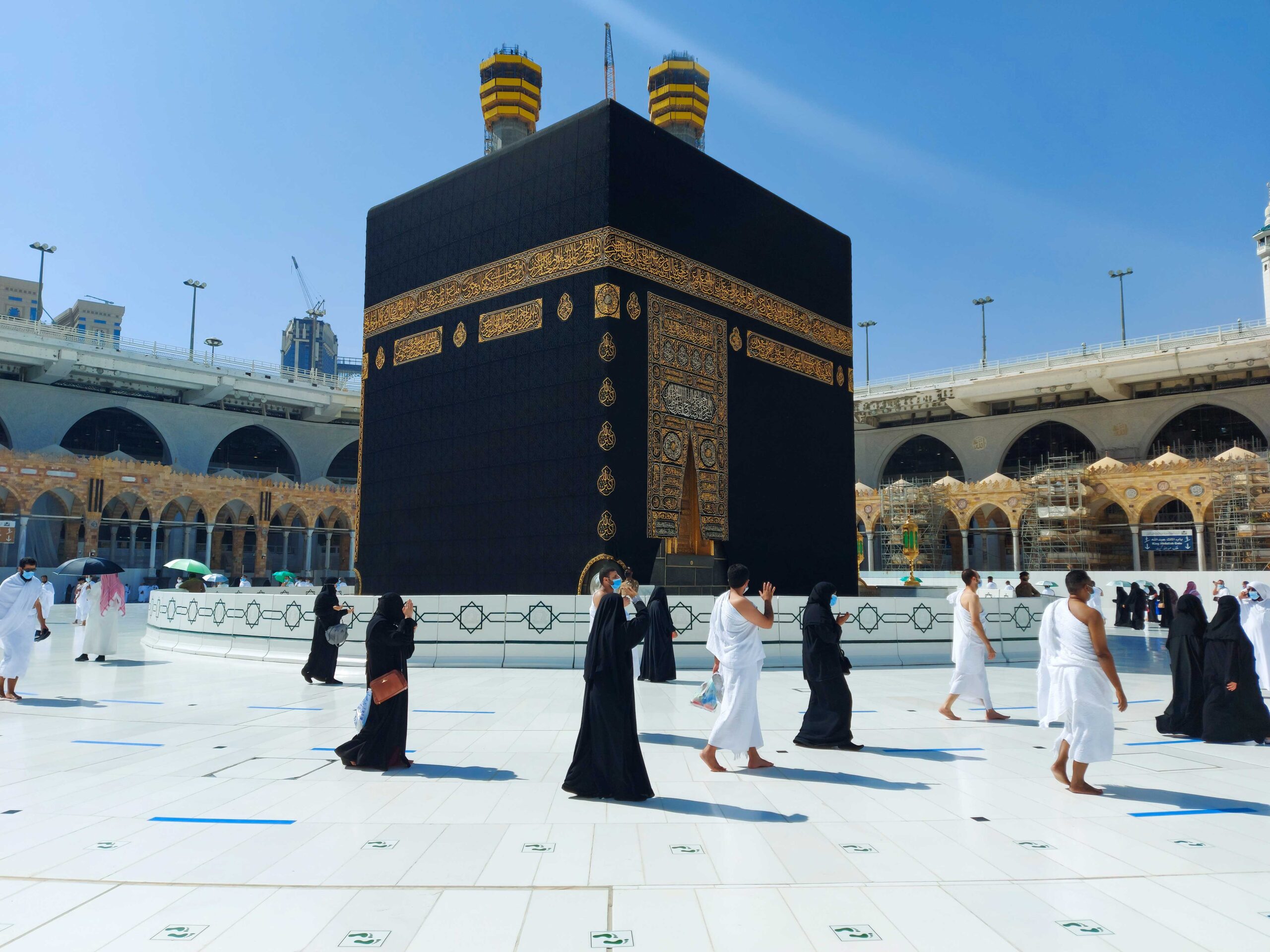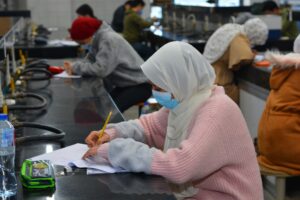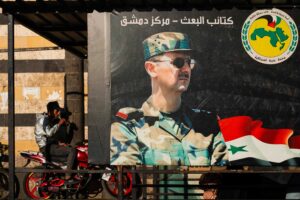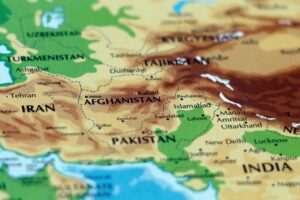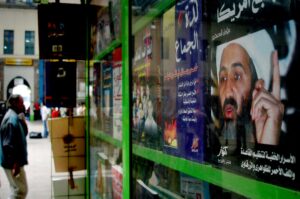Introduction
The novel Coronavirus (Covid-19) has wreaked havoc across the globe, threatening to crash economies, closing borders, and devastating lives. In the MENA region, Saudi Arabia stands in stark contrast to other regional powers such as Turkey, Iran, and Egypt, having acted quickly to close its borders and shut off internal movement in order to prevent the spread of the virus. As a result of these assertive actions, Saudi Arabia has successfully mitigated the most severe social and economic effects of Covid-19. However, just eight years earlier, the Kingdom failed to control the spread of Middle East Respiratory Syndrome (MERS), a viral respiratory infection caused by the MERS-coronavirus (MERS-CoV).[1] Three intertwined problems are apparent in the Saudi response from 2012-2014: (a) a lack of government-public communication, (b) institutional failings, and (c) insufficient healthcare infrastructure. The crisis of Coronavirus has been unfolding in Saudi Arabia for nearly a decade. Therefore, this article will argue that the Kingdom’s failure to effectively deal with the MERS coronavirus outbreaks in 2014 and 2015 acted as a catalyst for internal reform which placed Saudi Arabia in an advantageous position to deal with Covid-19, and also demonstrates important moves to develop the Saudi health sector in alignment with the Saudi 2030 vision.[2]
A Crisis Mishandled
Although MERS-Cov was first catalogued in 2012, it was not until 2014 that its more serious repercussions began to be felt. Using Grunig’s Theory of Excellence – a theory which “specifies how public relations makes organizations more effective, how it is organized and managed when it contributes most to organizational effectiveness, the conditions in organizations and their environments that make organizations more effective, and how the monetary value of public relations can be determined”[3] – to assess the MOH crisis response, Alsulaiman highlights frequent communication missteps taken by the government.[4] For instance, the dangers of MERS were not properly communicated at the outset of the crisis with the Minister of Health Abdullah al Rabeeah telling the public that he had ‘no idea why MERS was spreading across Saudi Arabia.’[5] Polling at the time of the 2014 outbreak revealed that while 97% of respondents were aware of MERS, only 36% realized that taking antibiotics will not stop the infection, and only 41% recognized that no medication has yet been manufactured to treat it.[6] Only 47% knew that bats and camels were the primary source of the virus. Even after al Rabeeah’s dismissal from office in 2014, the jumbled governmental response continued, and a lack of knowledge concerning containment and transmission prevention among medical staff and affected communities constituted a significant risk factor.[7]
Early Saudi mishandling is clear when comparing their endemic situation to the 2015 MERS-Cov outbreak in South Korea. In particular, Willman et. al emphasize important distinctions between South Korea and Saudi Arabia’s preparation of healthcare professionals in dealing with MERS. For instance, South Korea actively trained health care workers (HCW) how to manage incoming MERS-Cov cases, whether the cases were confirmed or not.[8] Consequently, South Korean HCW were better equipped to deal with potential cases of MERS-Cov entering hospitals and thus better equipped to avoid potential nosocomial, or intra-hospital, spread. By contrast, at the start of the 2014 outbreak in Saudi Arabia, some medical professionals were unaware of how to isolate and manage patients, lacked basic knowledge of transmission and viral spread which enabled the virus to travel further and faster than if patients were isolated and protective equipment was worn by staff and visitors from the onset of treatment.[9] Poor risk communication to HCW by the MOH was further compounded by delays in the reporting of MERS cases between hospitals, laboratories and government departments. In one case, an infected man was transferred from another hospital to the King Faisal Specialist Hospital (KFSH), but doctors there were not officially informed by medical staff at the previous hospital that they suspected he might have contracted MERS.[10]
Further aggravating the poor Saudi early response to MERS was the absence of sufficient healthcare infrastructure in hospitals. Two years before the outbreak, a 2010 study called attention to underdeveloped triage units in Saudi hospitals.[11] Indeed, during the 2014 outbreak in Jeddah new emergency patients were registered in crowded areas, and hospital rooms meant for four people often held 12.[12] Suspected MERS cases were not always identified and isolated, and patients unwittingly spread the virus around the hospital. Moreover, the majority of patients in the Jeddah MERS outbreak had contact with another health care facility, other patients, or both.[13] In both the 2014 and 2015 Saudi outbreak, overcrowding in emergency departments and failure to implement the appropriate protocols were found to be the primary causes of spread.[14] The risk of health care–associated transmission was therefore high, underlining the importance of proper screening and healthcare infrastructure in preventing the spread of the virus. Overall, the Saudi MOH’s initial response to MERS-CoV signifies both what Coombs terms an ‘operational’ crisis, in the sense that the virus became a serious threat to the Saudi public, and a ‘reputational crisis’, in that the MOH’s reputation was damaged after failing to provide either timely or factual information regarding the epidemic.[15] However, the shock of the outbreak was a significant catalyst for institutional change.
Following the second major MERS-Cov outbreak in 2015 at a Riyadh hospital known for its well established infection control program (ICP), the hospital set three themes of institutional change.[16] First, the knowledge gaps in basic infection control concepts and the lax compliance to IC policy were addressed. The second theme addressed difficulties in providing care in the busy emergency department (ED), with the core of the ED transformation designed to increase identification of potentially infectious patients in order to promptly isolate and diagnose them.[17] Furthermore, this transformation included extensive modification to triage units, restructuring rooms as well as the addition of a second site for patients with signs of Acute Respiratory Infection (ARI). The third change involved redesigning the patient flow for hospitalized patients in order to further avoid hospital transmission.[18] These developments in combatting the spread of MERS-Cov in Riyadh were paralleled on the national level. Importantly, the Saudi MOH designated more than 25 regional hospitals for the isolation and treatment of MERS patients. The Kingdom also made significant efforts to implement World Health Organization (WHO) recommendations on infection control and risk communication. A 2016 WHO report stated that among other measures, Saudi Arabia was ‘establishing a mechanism to monitor compliance by hospitals in implementing appropriate infection prevention and control (IPC) measures.’[19] By 2017, the WHO rated Saudi infection prevention and control programs a four out of five and Saudi International Health Regulation (IHR) capacities as one of the highest in the region (See Appendix 1). The efforts made by the MOH led to a significant decline of health care-associated MERS-CoV cases, from 332 in 2014 to 60 in 2016.[20] A further noteworthy consequence of the MERS epidemic was the Kingdom’s realization for the need for a central command and control center tasked with the tracing and handling of outbreaks. Founded in 2013 but not wholly operational until 2018, the Saudi Center for Disease Control (SCDC) has become the central agency tasked with orchestrating the Kingdom’s response to new diseases.[21] Thus, despite the slow initial response to the presence of the virus in 2012 and limited responses to the 2014 and 2015 outbreaks, vital improvements to Saudi health institutions were made which prepared the Saudi government and hospitals for the emergence of new viral respiratory infections.

The Novel Coronavirus
Saudi Arabia confirmed its first case of Covid-19 on 2 March, 2020: a Saudi national returning from Iran via Bahrain.[22] What Ebrahim et. al classify as ‘key mitigation strategies’ were quickly implemented. The Kingdom had previously announced forceful proactive measures, such as a travel ban on Chinese citizens and residents on February 6 (Saudi Press Agency),[23] as well as suspending the Umrah (pilgrimage), and an evacuation of citizens from Wuhan, Beijing, and Hong Kong on 2 February 2020.[24] On March 12, they extended the travel ban to 39 countries, including Gulf Cooperation Council (GCC) states, EU members, India, and Ethiopia.[25] Worryingly, Saudi Arabia’s early efforts seemingly had sectarian tones. On March 8, the Kingdom enforced a total lockdown of the eastern, predominantly Shi’a province of Qatif, where cases had rapidly escalated as a result of pilgrims returning from Iran.[26] Shia communities across the country have historically faced marginalization and Shia religious authorities and activists viewed the selective lockdown as a reflection of the state’s sectarian impulses.[27] Further adding to concerns over sectarianization of Covid-19 was a Saudi official’s statement that permitting the unofficial access of Saudi citizens to Iran was ‘evidence of Iran’s direct responsibility in increasing COVID-19 infections and in the virus’ outbreak around the world’.[28] However, efforts to restrain sectarianism, such as pardons for those who had travelled to Iran without reporting their journey, allayed some concerns.[29] Social distancing measures and domestic travel bans were also introduced on March 24 with a national curfew being announced, and movement between all major urban centers banned by April 6. The SCDC had released IPC guidelines for Covid-19 in January 2020 and the creation of new respiratory triage units within Saudi hospitals in reaction to MERS feature heavily in the guidelines.[30] Within a month, Saudi Arabia had completely closed down and begun to implement the IPC guidelines. The 25 hospitals designated for the treatment of MERS were also prepared for handling Covid-19 patients.[31]
Crucially, effective risk communication and clear repercussions for the violation of curfews have been a feature of the Saudi Covid-19 response. Multiple awareness campaigns in different languages are available on various media platforms to increase public awareness about COVID-19 and provide-up-to-date information on new cases, deaths, and recoveries.[32] Recent polling shows that 90% of people in Saudi Arabia take the Coronavirus threat ‘very seriously’, and nearly 60% of respondents say they will continue to wear face masks in public even when the pandemic is over in order to protect others.[33] Overall, the swift implementation of lockdowns and success of risk communication in 2020 are a significant contrast to the Kingdom’s early MERS response. The health infrastructure that was laid down in the wake of the 2014 and 2015 MERS outbreaks was effectively utilized to tackle Covid-19 and Saudi Arabia has avoided scenes of disaster and the overwhelming of hospitals faced in other countries such as Egypt, Iran, Spain, Italy, or the United States.
Conclusion
Coronavirus has been an unfolding crisis in Saudi Arabia since 2012. The Kingdom serves as a salient example of the importance of learning from the experience of the current pandemic in order to respond to the next. Despite critical mistakes in their response to the onset of MERS-Cov in the region, Riyadh successfully pursued meaningful institutional reforms in order to mitigate the effects of future outbreaks. The creation of the SCDC and proactive, centralized response to Covid-19 demonstrates the need for a consolidated approach to any future pandemic. Saudi experiences in dealing with the MERS-Cov outbreak undoubtedly contributed to their strong early response to Covid-19 in 2020. Developments in healthcare are a key plank in Saudi Vision 2030, and for the time being at least, it seems that Saudi Arabia has successfully avoided the worst of the pandemic.

[1] Abdullah Algaissi et al. “Preparedness and Response to COVID-19 in Saudi Arabia: Lessons Learned from MERS-CoV.” Journal of Infection and Public Health. (2020) p.2
[2] https://www.moh.gov.sa/Ministry/nehs/Pages/vision2030.aspx ،March 1, 2018 وزارة الصحة. ”مبادرات وزارة الصحة ٢٠٣٠“
[3] Grunig, J. E. (1992). Communication, public relations, and effective organizations: An overview of the book. In J. E. Grunig (Ed.), Excellence in public relations and communication management (pp. 1–28). Hillsdale, NJ: Lawrence Erlbaum Associates, p. 27
[4] Saud Alsulaiman. “The (Mis)management of Public Health Campaigns: A Critical Study of the Coronavirus Crisis in the Kingdom of Saudi Arabia.” The International Journal of Communication and Health, 11:1 (2017)
[5] Marnie Willman, Kobasa, and Kindrachuk. “A Comparative Analysis of Factors Influencing Two Outbreaks of Middle Eastern Respiratory Syndrome (MERS) in Saudi Arabia and South Korea.” Viruses, 11:12 (2019) p.6
[6] Hanan Balkhy, Perl, and Arabi. “Preventing healthcare-associated transmission of the Middle East Respiratory Syndrome (MERS): Our Achilles heel.” Journal of Infection and Public Health, 9:3, (2016)
[7] Alsulaiman. “The (Mis)management of Public Health Campaigns.” p.72
[8] Ibid
[9] Omar Al-Mohreja et al. “Is the Saudi public aware of Middle East respiratory syndrome?” Journal of Infection and Public Health, 9:3 (2016) p.259
[10] Willman, Kobasa, and Kindrachuk. “A Comparative Analysis” p.6
[11] Ibid p.9
[12] Ibid
[13] Ben Hubbard and Donald McNeil. “Flawed Saudi Response Is Cited in Outbreak of the Middle East Virus MERS.” June 29, 2014, https://www.nytimes.com/2014/06/30/world/middleeast/flawed-saudi-response-fueled-outbreak-of-mers-middle-east-virus.html
[14] Nabeel A. Qureshi. “Triage systems: A review of the literature with reference to Saudi Arabia.” Eastern Mediterranean Health Journal 16 no.6 (2010) p.694
[15] Hubbard and McNeil. “Flawed Saudi Response.”
[16] Ikwo Oboho et al. “2014 MERS-CoV Outbreak in Jeddah A Link to Health Care Facilities.” New England Journal of Medicine, 372:9 (2015) p.2
[17] Balkhy, Perl, and Arabi. “Preventing healthcare-associated transmission” p.209
[18] Timothy W. Coombs. “State of Crisis Communication: Evidence and the Bleeding Edge.” September 22, 2014, https://instituteforpr.org/state-crisis-communication-evidence-bleeding-edge/
[19] Hanan Balkhy. “MERS CoV: A trigger for healthcare transformation.” Journal of Infection and Public Health, 9:1 (2016) p.1
[20] Ibid
[21] Ibid p.2
[22] WHO. “WHO’s high-level mission to Saudi Arabia on Middle East respiratory syndrome coronavirus (MERS-CoV) 11–14 January 2016.” 14 January, 2016, http://www.emro.who.int/pandemic-epidemic-diseases/news/mers-mission-january2016.html
[23] WHO “Joint External Evaluation of IHR Core Capacities of the Kingdom of Saudi Arabia.” October 04, 2017, from https://www.who.int/ihr/publications/WHO-WHE-CPI-2017.25.report/en/ p.8
[24] Algaissi et al. “Preparedness and Response to COVID-19 in Saudi Arabia,” p.3
[25] 2020 ،02 March وكالة الانباء السعودية. “عام/الصحة تعلن عن أول إصابة بفيروس كورونا الجديد لمواطن قادم من إيران”.
[26] https://www.spa.gov.sa/2041821
[27] Saudi Press Agency. “Passports Announces Suspension of Travel to China.” February 06, 2020, https://www.spa.gov.sa/viewstory.php?lang=en
[28] Thamir Alandijany, Faizo, and Azhar. “Coronavirus disease of 2019 (COVID-19) in the Gulf Cooperation Council (GCC) countries: Current status and management practices.” Journal of Infection and Public Health. (2020) p.2
[29] Tuqa Khalid. “Coronavirus: Saudi Arabia bans travel to 39 countries including EU states.” March 12, 2020, https://english.alarabiya.net/en/News/gulf/2020/03/12/Coronavirus-Saudi-Arabia-bans-travel-to-EU-India-Pakistan-Philippines-Sudan
[30] Al Jazeera. “Saudi locks down Qatif as coronavirus surges in the Gulf.” March 08, 2020 https://www.aljazeera.com/news/2020/03/saudi-locks-qatif-coronavirus-surges-gulf-200308142809697.html
[31] Reuters, 2020
[32] Misba Bhatti. “COVID Restrictions and Sectarian Tensions in the Middle East.” May 11, 2020, https://cirs.georgetown.edu/news-analysis/covid-restrictions-and-sectarian-tensions-middle-east
[33] Asharq Al-Awsat. “Saudi Arabia Denounces Iran for Granting Saudi Citizens Entry amid Virus Outbreak.” March 5, 2020, https://english.aawsat.com//home/article/2164826/saudi-arabia-denounces-iran-granting-saudi-citizens-entry-amid-virus-outbreak
[34] Ibid
[35] Ministry of Health. “Novel Corona Virus (2019-nCoV) Infection Guidelines V1.0.” January, 2020 https://www.moh.gov.sa/en/CCC/healthp/regulations/Documents/Novel%20Corona%20Virus%20Infection%20Guidelines.pdf
[36] Alandijany, Faizo, and Azhar. “(COVID-19) in the Gulf Cooperation Council (GCC) countries”. p.4
[37] Ipsos. “COVID-19 MENA Consumer Sentiment Tracker.” April 16, 2020 https://www.ipsos.com/sites/default/files/ct/news/documents/2020-04/covid-19_mena_consumer_sentiment_tracker_wave_4_regional_report.pdf


